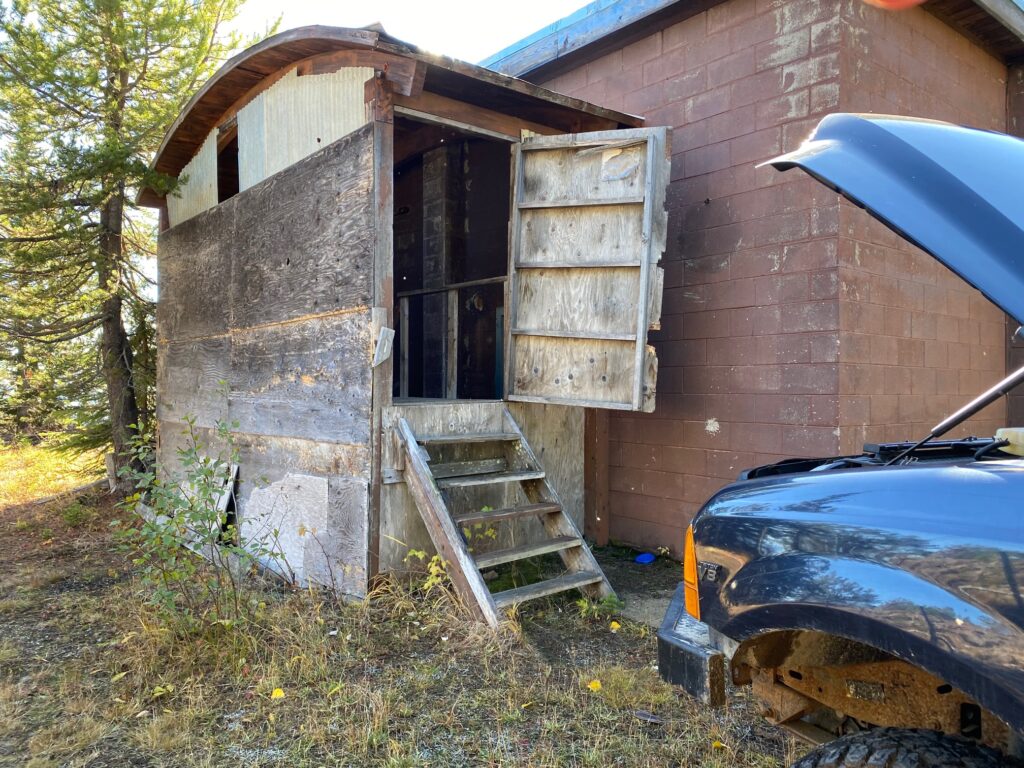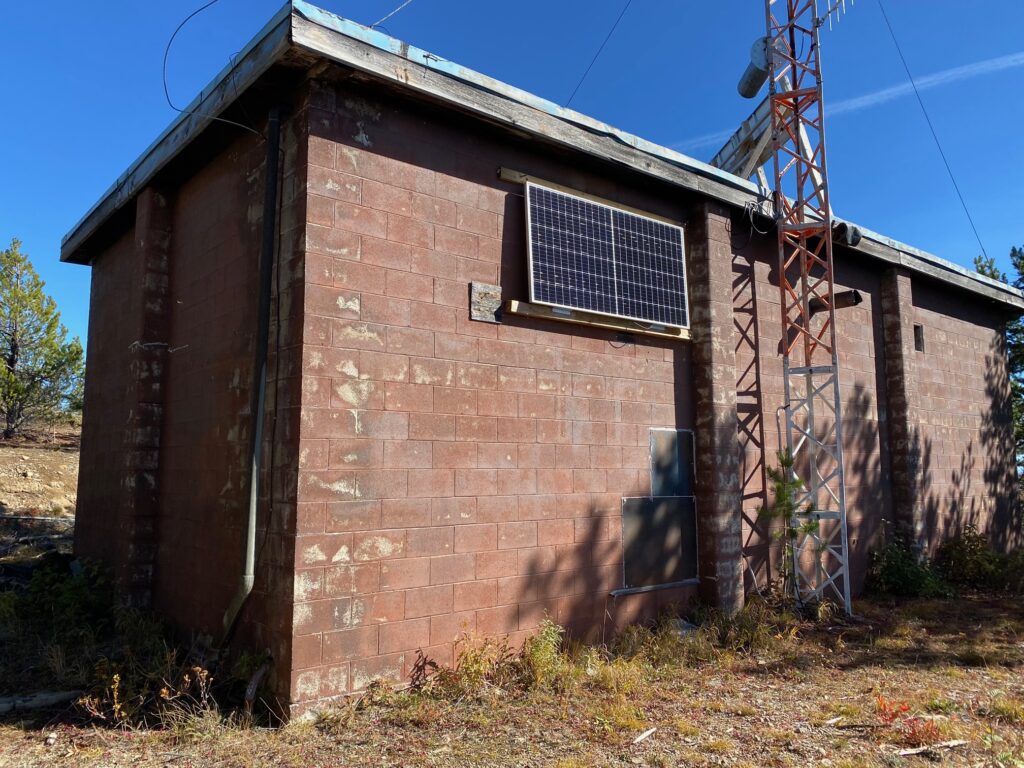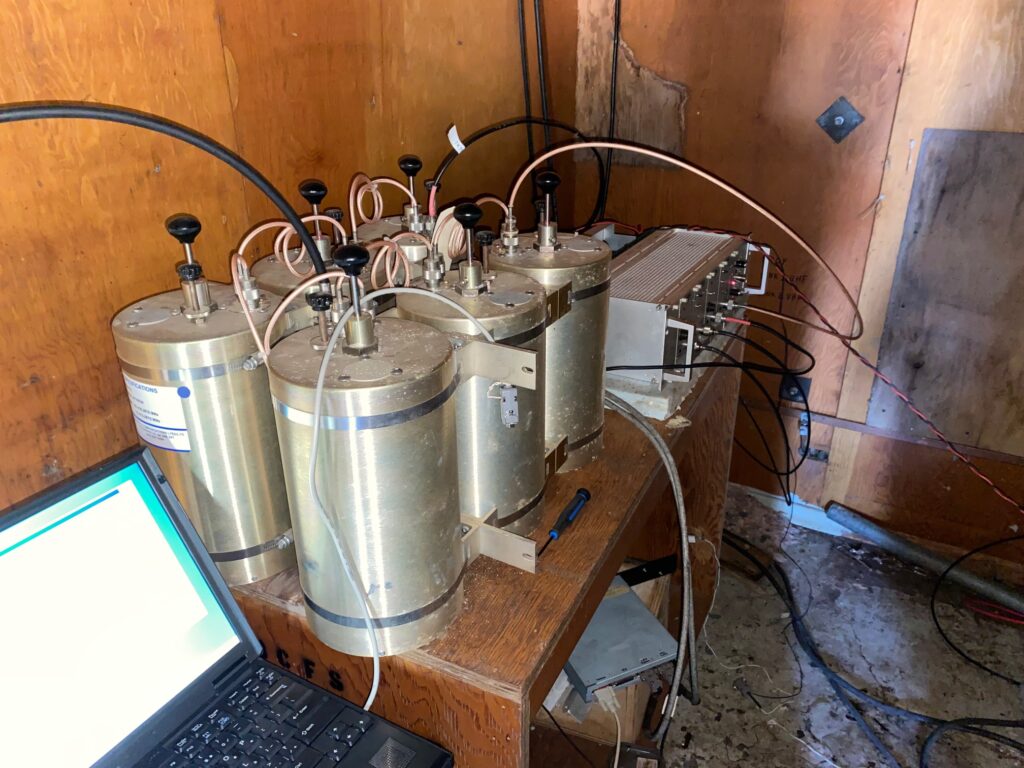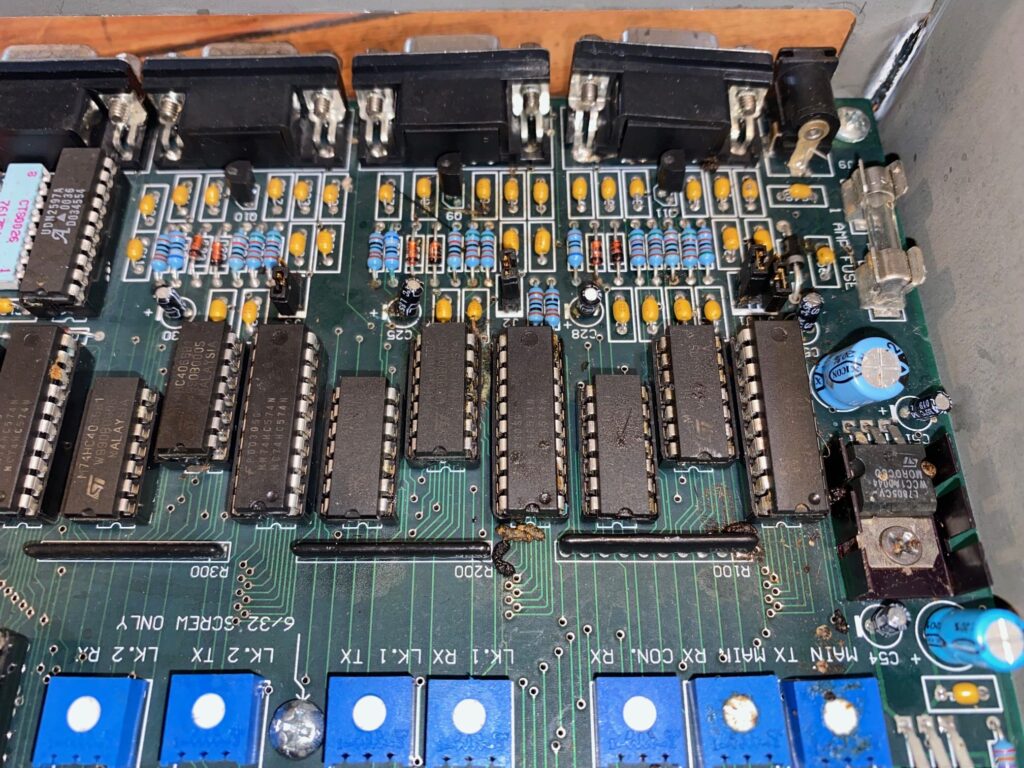Following the installation of the new lead-carbon batteries on the RNH repeater, by Phil VE7BPH and Peter VE7RZZ on September 30th, the controller began beaconing a ‘Battery Alert’ alarm whenever it transmitted. It wasn’t possible to access the repeater and turn off the alarms using DTMF tones despite attempts by Phil VE7BPH and Robin VE7HMN. It appeared that it would be necessary to reload the repeater’s programming code, so a site visit was arranged for Friday, October 6th.
Peter VE7RZZ and Robin VE7HMN travelled up to the repeater and checked out the site, which was in generally good condition although the roof continues to leak and the building interior is damp with some puddles on the floor. Some diagnostics were done on the RLC2a controller in an attempt to find out why it was alerting and why it wouldn’t respond to DTMF tones, but nothing was evident in its settings. Three attempts were made to reload the programming, but the controller didn’t respond as it should – the code upload proceeded much more quickly than normal, as if there was no flow-control on the serial port. The cover of the controller was removed and it was evident that it had been used as a winter home by one or more small rodents, causing damage to several parts of the circuit board. The controller would have to be replaced if we wanted to have a repeater at the site over the winter.
The RLC1+ controller from the VE7RSA repeater had been used by VE7HMN to test the equipment and process prior to this trip, so it was available as a substitute even though its programming and connections are different than the RLC2a controller. The necessary identifier changes were made using the code originally from the VE7AHR controller which is also an RLC1+. It was swapped in place of the defective controller, given a quick test, the audio levels adjusted, and DTMF functionality verified.
The next day additional changes to the programming were made remotely by radio using DTMF commands to adjust sensor levels and disable some of the alerting macros. VE7RNH is now functioning well as a stand-alone repeater, but is not linked to VE7AHR or VE7QMR. Thanks, especially to Peter VE7RZZ, as this was his third trip this year to do maintenance on the RNH repeater, also to Robin VE7HMN.
Additional work will be required to test and possibly repair the defective RLC2a controller. (Look closely at the RLC2a controller circuit board by clicking on the photo below).





